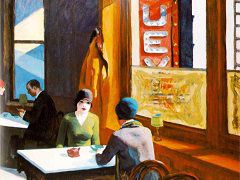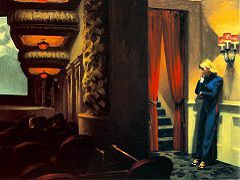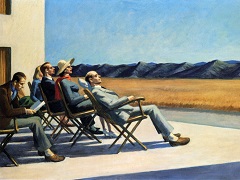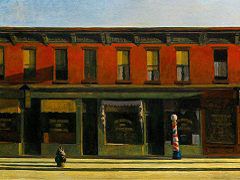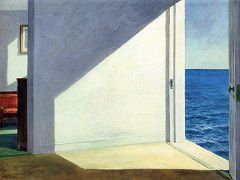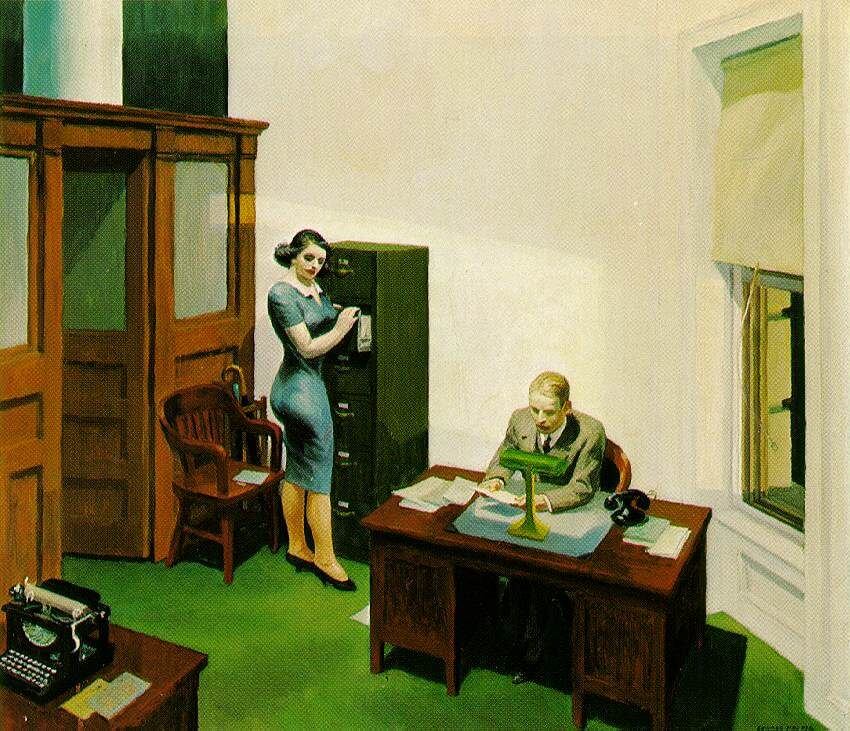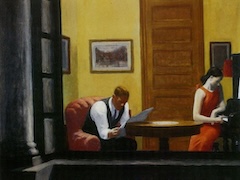A Woman in the Sun, 1961 by Edward Hopper

A Woman in the Sun is a bit closer to nature than the big-city woman. In fact, she has reached the borderline. Hopper has put her in a situation beyond which she cannot go. She has let the sun take possession of her. She holds a cigarette, but has forgotten to light it. She has forgotten herself.
It is this sunlight in Hopper's pictures that places the figures so tangibly before us, and that simultaneously removes them to a distance, lends them an aura of the ineffable. Hopper's rendering of the figure at once suggests proximity and demonstrates the unbridgeable gap between life and art. Realizing that this gap exists may be painful, but it does free us as viewers from the role of voyeur and permit us to assume the artist's role - that of silent witness.
So it is not we who lower our eyes after all, it is the figures we observe who do. If they are not fascinated by the slanting sunlight, they keep their eyes down. And it is this lowered gaze that makes Hopper's figures seem so introspective, as if looking into themselves. They pursue their own thoughts or dreams, which sometimes lead them far from the here and now.



